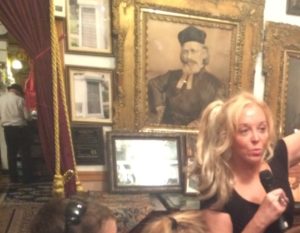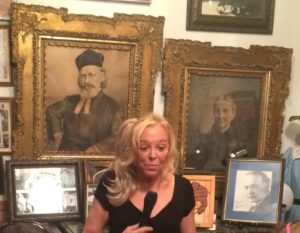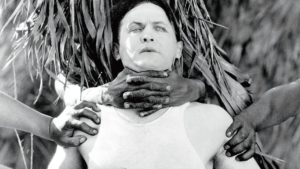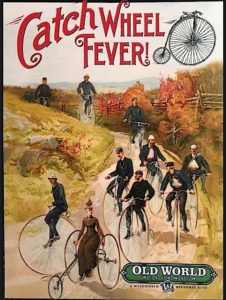Below are two great vintage 1944 motion picture First Day Covers with add-on cachets for Houdini’s movies, The Grim Game and Terror Island. These items recently sold individually on eBay for $15.50 and $15.55 respectively. Congratulations to the winners!
Grim Game FDC:
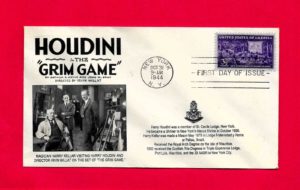
- MAGICIAN HARRY KELLAR VISITING HARRY HOUDINI AND DIRECTOR IRVIN WILLAT ON THE SET OF “THE GRIM GAME.” [Note: Arthur Moses owns the original photograph which I was lucky enough to see.]
- FREEMASONS: Harry Houdini was a member of St. Cecile Lodge, New York.
- He became a Shriner in New York’s Mecca Shrine in October 1926.
- Harry Kellar was made a Mason May 1875 in Lodge Fraternidad y Homa at Peltas, Brazil.
- Received the Royal Arch Degree on the Isle of Mauritius.
- 1850 received the Scottish Rite Degrees in Triple Esperance Lodge, Port Luis, Mauritius, and the 33 AASR in New York City.
- FIRST DAY OF ISSUE, FIRST DAY COVER, FDOI
- PENCIL ADDRESS ERASED, SEALED
- POSTMARKED: NEW YORK, NY, OCTOBER 31, 1944
Terror Island FDC:
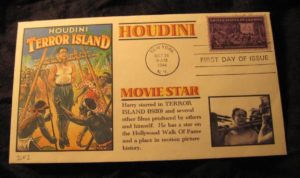
- Harry starred in TERROR ISLAND (1920) and several other films produced by others and himself.
- He has a star on the Hollywood Walk Of Fame and a place in motion picture history.
- FIRST DAY OF ISSUE, FIRST DAY COVER, FDOI
- PENCIL ADDRESS ERASED, SEALED
- POSTMARKED: NEW YORK, NY, OCTOBER 31, 1944

